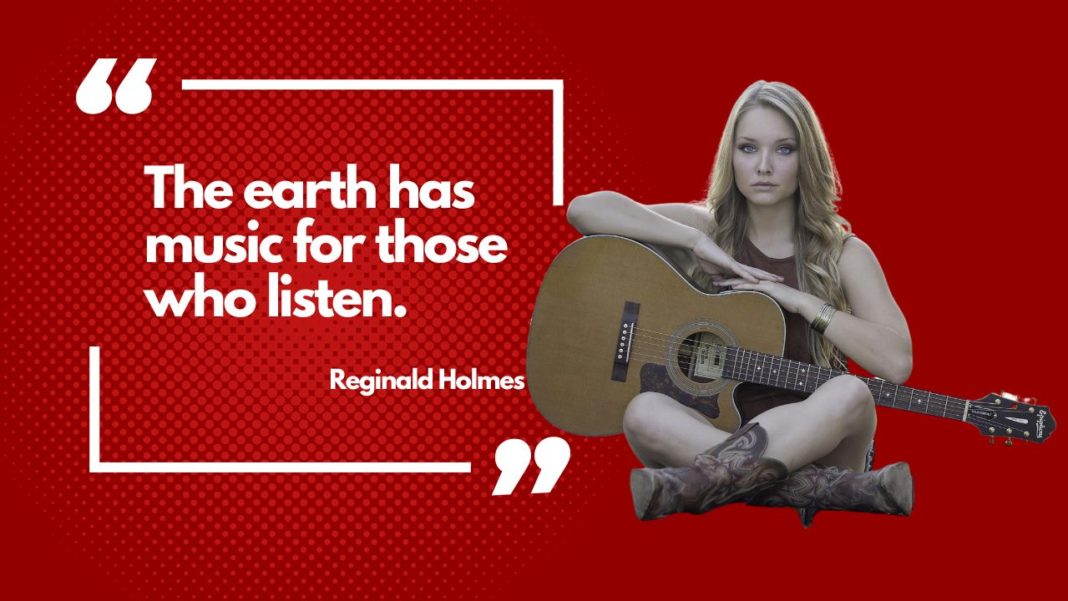In the poetic words of Reginald Holmes, “The earth has music for those who listen.” This evocative statement is not merely a celebration of the natural world’s rhythmic beauty, but a profound invitation to engage deeply with our surroundings. The gentle rustle of leaves, the distant call of a nightingale, or the soft whisper of a stream—these are not just auditory experiences but dialogues waiting to be heard.
Drawing parallels between these natural symphonies and the world of dating may seem unconventional at first, yet, at its core, the essence of forming meaningful relationships is strikingly similar to listening to the earth’s music. Successful relationships thrive on deep listening and a nuanced appreciation of communication. Just as an attuned nature listener can discern the subtle differences between the calls of various birds, a partner in a relationship benefits from tuning in to the less obvious cues—be it in tone, expression, or the silence between words.
This connection between listening to nature and listening to a partner is not merely metaphorical but a practical pathway to deeper understanding and connection. By fostering the art of listening, we can learn to appreciate not just what is said, but how it is said, and perhaps more importantly, what remains unspoken. As we explore this idea further, we will uncover how the music of the earth can guide us in harmonising our relationships, making every moment shared with a loved one as enriching as the melodies hidden in nature’s silence.
The Art of Listening in Nature
Reginald Holmes’s insight invites us to engage with the world in a profoundly attentive way. This literal interpretation focuses on the sounds and rhythms of nature—a chorus of bird calls, the rhythmic crashing of waves, the whisper of wind through trees. By fully immersing ourselves in these natural concerts, we can develop a deeper, more visceral appreciation of the world around us. This heightened awareness not only connects us more closely to the environment but enriches our inner lives by fostering a sense of peace and wonder.
The benefits of such attentive listening are not merely anecdotal but are supported by scientific studies. For instance, research published by the National Library of Medicine found that participants who engaged in 90-minute nature walks reported lower levels of rumination and showed reduced neural activity in an area of the brain linked to risk for mental illness compared to those who walked through an urban environment. This suggests that spending time in nature can mitigate negative thoughts and improve overall mental health.
Another study from the American Psychological Association highlights that exposure to natural environments increases empathy and cooperative behavior. Participants who simply viewed nature scenes were more likely to exhibit acts of generosity and altruism compared to those who viewed urban scenes. These findings underscore the transformative power of nature; it not only soothes the mind but also enhances our emotional connections with others.
Through listening to nature’s music, we open ourselves to a world where every sound can teach us about patience, resilience, and the interconnectedness of life. By fostering this connection, we can carry these lessons into our personal and romantic relationships, enhancing our capacity to listen and empathise with our partners.
Listening in Relationships
Translating the skills honed by listening to nature into the context of romantic relationships can have profound effects. Just as one might discern the subtle shifts in the wind or the nuanced chirps of a bird, so too can a partner learn to understand and respond to the less obvious cues in their relationships. This level of attentive listening extends beyond hearing words; it involves interpreting non-verbal cues, tone of voice, and the unspoken thoughts and feelings of a partner.
Non-verbal communication—such as eye contact, facial expressions, and body language—often conveys more than words alone. These cues can hint at joy, discomfort, or hesitation that spoken language might mask. Similarly, the tone of voice can reveal underlying emotions like sarcasm, warmth, or frustration, providing further insight into a partner’s true feelings. Learning to interpret these signals accurately can deepen understanding and foster a stronger connection between partners.
However, effective communication is often hindered by common barriers. Distractions such as technology, preconceived notions, and stress can lead to misunderstandings and feelings of neglect. Overcoming these barriers involves deliberate efforts, such as setting aside dedicated time for conversations, actively focusing on the present, and approaching discussions with openness and without judgment.
Here are some practical tips for enhancing listening in relationships:
- Practice Active Listening: Focus fully on your partner, avoiding interruptions and refraining from planning your response while they speak. Show that you are listening through nods or verbal acknowledgments.
- Create a Listening Environment: Minimise distractions by turning off televisions and putting away mobile devices during conversations. Choosing a quiet and comfortable setting can also help both partners feel more at ease to express themselves freely.
- Clarify and Reflect: If something is unclear, ask for clarification instead of making assumptions. Reflect what your partner has said by paraphrasing their words. This not only demonstrates that you are listening but also helps to ensure that you have understood their message correctly.
- Manage Emotional Responses: It’s important to stay calm and composed, even when discussions become emotionally charged. Practising mindfulness or pausing the conversation to take a few deep breaths can prevent reactions driven by strong emotions, which can escalate conflicts.
Practical Listening Exercises
Improving listening skills in a relationship is not just about understanding theoretical concepts; it involves regular practice and commitment. Here are several practical exercises that couples can undertake to enhance their ability to listen to each other effectively, drawing parallels to listening to the natural world.
Active Listening Drills
Mirroring Exercise: One partner shares a thought or feeling, and the other partner must repeat it back to confirm understanding before responding. This exercise ensures that each person is accurately heard and understood.
Emotion Labelling: During a conversation, take turns identifying the emotions behind each other’s words. This can help partners become more attuned to underlying feelings and improve emotional connectivity.
Silent Walks
Taking walks together in a quiet, natural setting can be extremely beneficial. During these walks, both partners focus on absorbing the sounds and sights around them, without speaking. After the walk, they share their observations and feelings about the experience. This exercise helps to synchronise their sensory experiences and can lead to deeper non-verbal communication and understanding.
Maintaining Presence and Attentiveness
Daily Check-ins: Commit to spending a few minutes each day discussing how each partner is feeling or what they experienced during the day. This routine fosters a habit of regular, mindful conversation.
Eye Contact: Make a conscious effort to maintain eye contact when talking. This not only improves concentration but also strengthens emotional connections, signaling that you are fully engaged and present.
Technology-Free Time: Designate certain times or areas as technology-free, to ensure that both partners are fully present without distractions from phones, computers, or television.
Reflection Sessions
Regularly set aside time to reflect on the quality of communication in the relationship. Discuss what aspects of listening are going well and identify areas for improvement. This could be done weekly or monthly, providing a platform for continuous personal and relational growth.
Listening to Body Language
Engage in exercises where you guess each other’s mood or feelings based on body language alone, without speaking. This can enhance sensitivity to non-verbal cues, an essential aspect of deep listening.
Conclusion
Throughout this exploration, we’ve delved into the profound wisdom encapsulated in Reginald Holmes’s poetic insight, “The earth has music for those who listen.” Just as the attentive observer can appreciate the symphony of nature—from the rustling leaves to the rhythmic ebb and flow of ocean tides—so too can partners in a relationship discover a richer, more resonant connection through the art of listening.
We’ve seen how the skills cultivated by listening to nature’s melodies can be transformative when applied to romantic relationships. Understanding not only the words spoken but also the subtleties of tone, non-verbal cues, and the silent spaces between words can significantly enhance communication. By practicing active listening, engaging in silent walks, and creating technology-free spaces, couples can foster a deeper understanding and appreciation for one another.
The exercises suggested, such as active listening drills and regular reflection sessions, are designed to build a foundation of attentive and empathetic communication. These practices encourage couples to remain present and engaged, mirroring the focused attention one might give to the intricate layers of a natural landscape.
As we draw this discussion to a close, let us reaffirm the guiding metaphor of the earth’s music as a beacon for cultivating deeper connections in our relationships. I encourage all readers to ‘tune in’ to their partner’s needs and emotions with the same dedication and attentiveness as one would to the soothing and often enlightening sounds of nature. By doing so, we can not only hear but truly listen, opening up a world of mutual understanding and harmonious coexistence.






